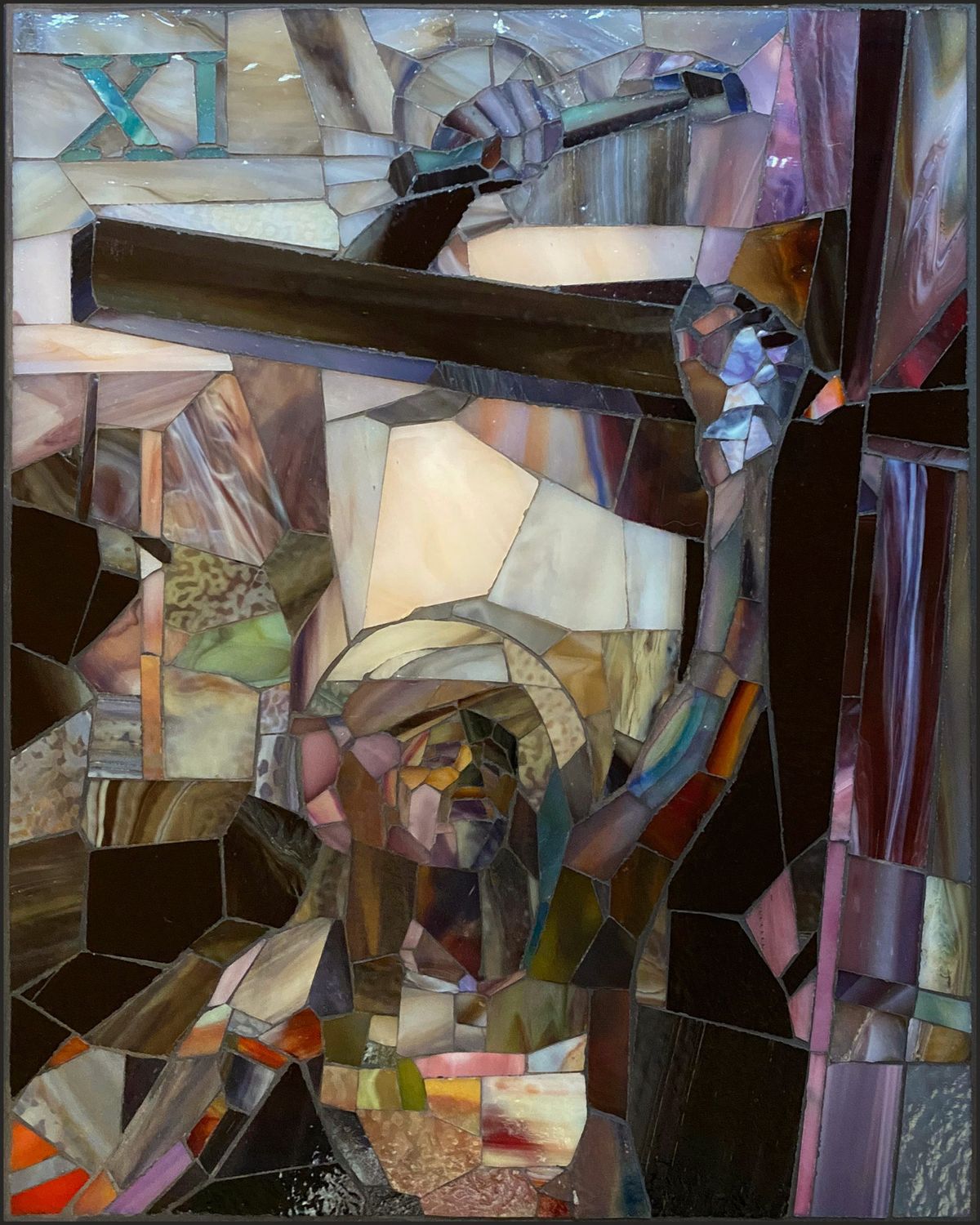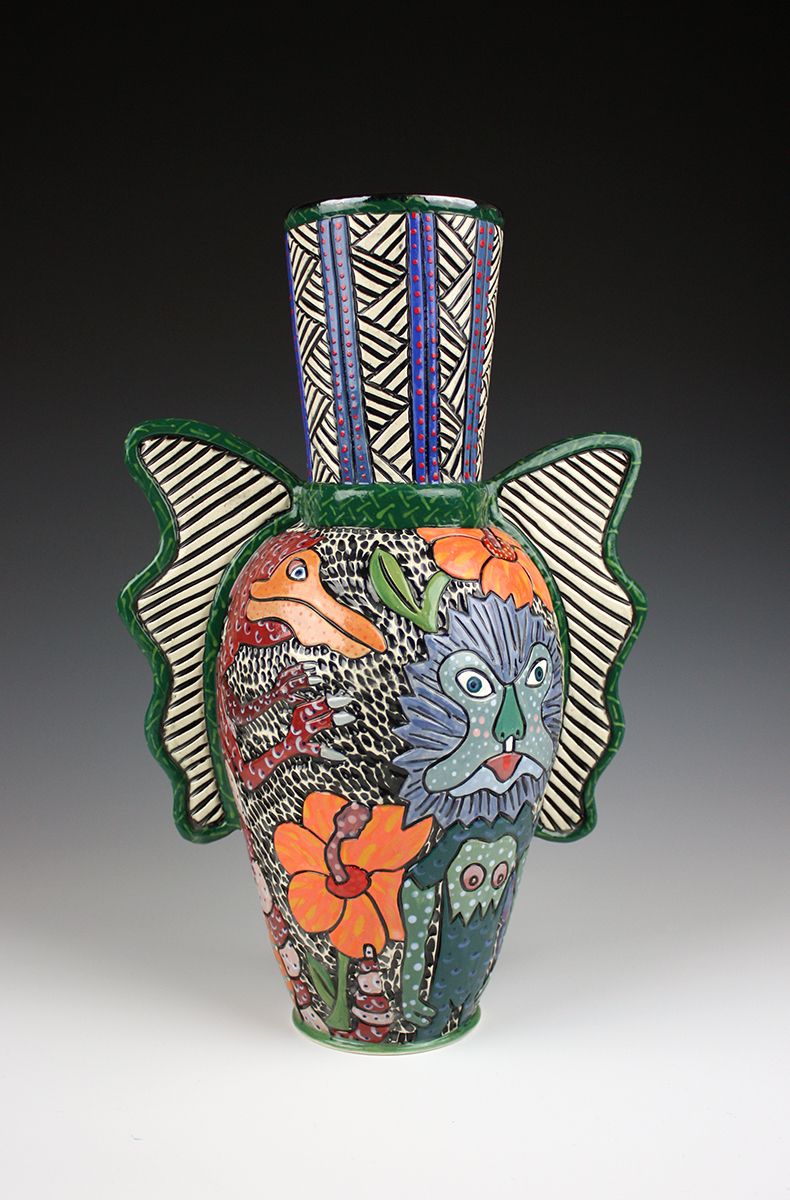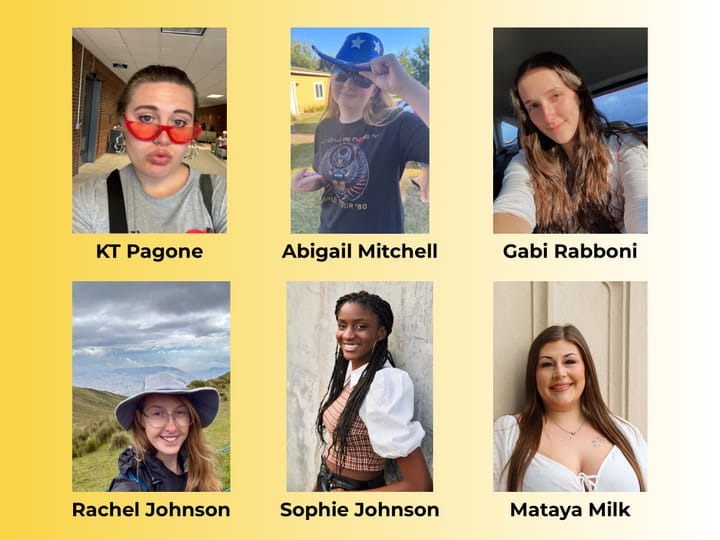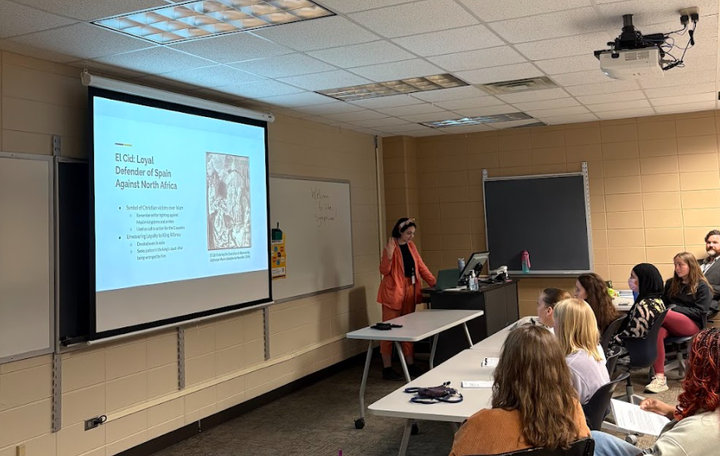Gallery features artwork of Augustana Professors

The Eide/Dalrymple Gallery is hosting a stunning display of skill and individuality from Augustana professors during the Augustana Faculty Biennial until March 18. The broad array of artwork highlights the diversity of the artistic output of Augustana instructors in form, style and emotion.
As the exhibit sign at the gallery’s entrance says, creation and teaching aren’t mutually exclusive to instructors of the art department. In reality, lessons instructors learned from teaching inform their art making and vice versa. This outlook lends itself to the originality that can be seen in the exhibit.
Walking through the gallery, perhaps the most noticeable differentiating aspect is the variety of media used. From ceramics — both functional and sculptural — and stained glass to painting and printmaking, the biennial showcases the wide selection of tools and techniques instructors in the art department use to express their creativity.
One of the first examples of these diverse practices can be seen right up front. Next to the gallery sign is “Nigella, Lamp,” a functional-but-creative lamp that looks like a living creature by professor Molly Uravitch, a new addition to the department. There are also bowls and mugs crafted by recently retired faculty emeritus Gerry Punt. As for sculptural work, the exhibit also includes gallery coordinator John Henry Peters’ bronzework, such as his intricate and detailed “Giacometti’s Palace at 8 A.M.”
More unique media includes the work of professor Scott Parsons. Nearly an entire wall of the exhibit is dedicated to Parsons’ stained glass interpretation of the stations of the cross, which he made for Saint Michael’s Church in Sioux Falls. Also on display is Parson’s construction plan for “Night,” a colorful epoxy floor planned for Charlotte Douglas airport.
Other outlets include the detailed prints of instructor Chad Nelson and professor Lindsay Twa. While Nelson leans more towards large scenes, such as two panels from a 24-foot-wide project, Twa narrows the scope with smaller prints.
Among the more typical artforms are drawings by Twa, oil paintings by faculty emeriti Tom Shields and Steve Thomas, and photographs by professor Anna Reich.
While the fundamental differences in techniques used is awe-inducing as is, the gallery adds more layers to these differences by also highlighting the various styles the art professors ascribe to.


One of the most noticeable styles is the stimulating, colorful ceramic work of Uravitch, which she says is inspired by the “more is more” approach of Baroque. Her piece “Mr. and Mrs. Twomby Garden Dance, Candelabra” is an intricate scene featuring two colorful individuals, orange and green nature, and the faces of multiple critters.
More abstract styles include Parsons’ “Stations of the Cross.” His rendition abstracts the scenes into geometric shapes and uses vibrant colors to heighten the scene’s passion. Along a similar vein, Nelson’s prints take pieces of reality and break them down into weaving lines and waves of black.
Other artists focus on a more realistic style. Twa’s “Balance” features a highly realistic “helicopter” tree seed, while Reich captures reality in the narrative sense with her “National Plowing Champion,” which focuses on a farmer plowing a field.
On a more individual level, the biennial also puts on display the different emotions the instructors imbue their art with. From lighthearted to somber, the curation emphasizes the drastic range of feelings that are tapped into when creating.
On the joyous, albeit hectic, side of the spectrum is Thomas. His “Easter Frenzy,” which features a colorful range of red, pink, orange and brown oil paints spread across a white background, represents the family chaos of holidays with a sense of humor.
While less overt, other pieces carry a similarly positive feeling. Reich’s “Forest 1” and “Forest 2” capture lush, green scenery that Reich experienced while on a hiking trip with her father.
The exhibit is by no means strictly upbeat, though. Parsons’ “Stations of the Cross” leans into the profound, contemplative feelings tied into the harrowing journey of Christ, which his colorful medium accents.
Other works carry a more melancholy tone. Nelson’s variety of prints, which he says are inspired by a tumultuous year he’s had as a father, focus on introspection and carry a sense of grief, such as his dark “Absolution: The Journey In,” which features a skull and a piercing eye.
However one approaches the artwork on display, the Augustana Faculty Biennial showcases the beautiful ingenuity and diversity that the members of the Augustana art department bring to their creations.



